Ohio Rental Agreement

An Ohio rental agreement is a legal contract between a landlord overseeing a rental property and a tenant who wishes to use it. Ohio landlord-tenant law governs these agreements; rental terms must be within the limits allowed by law.
Ohio Rental Agreement Types
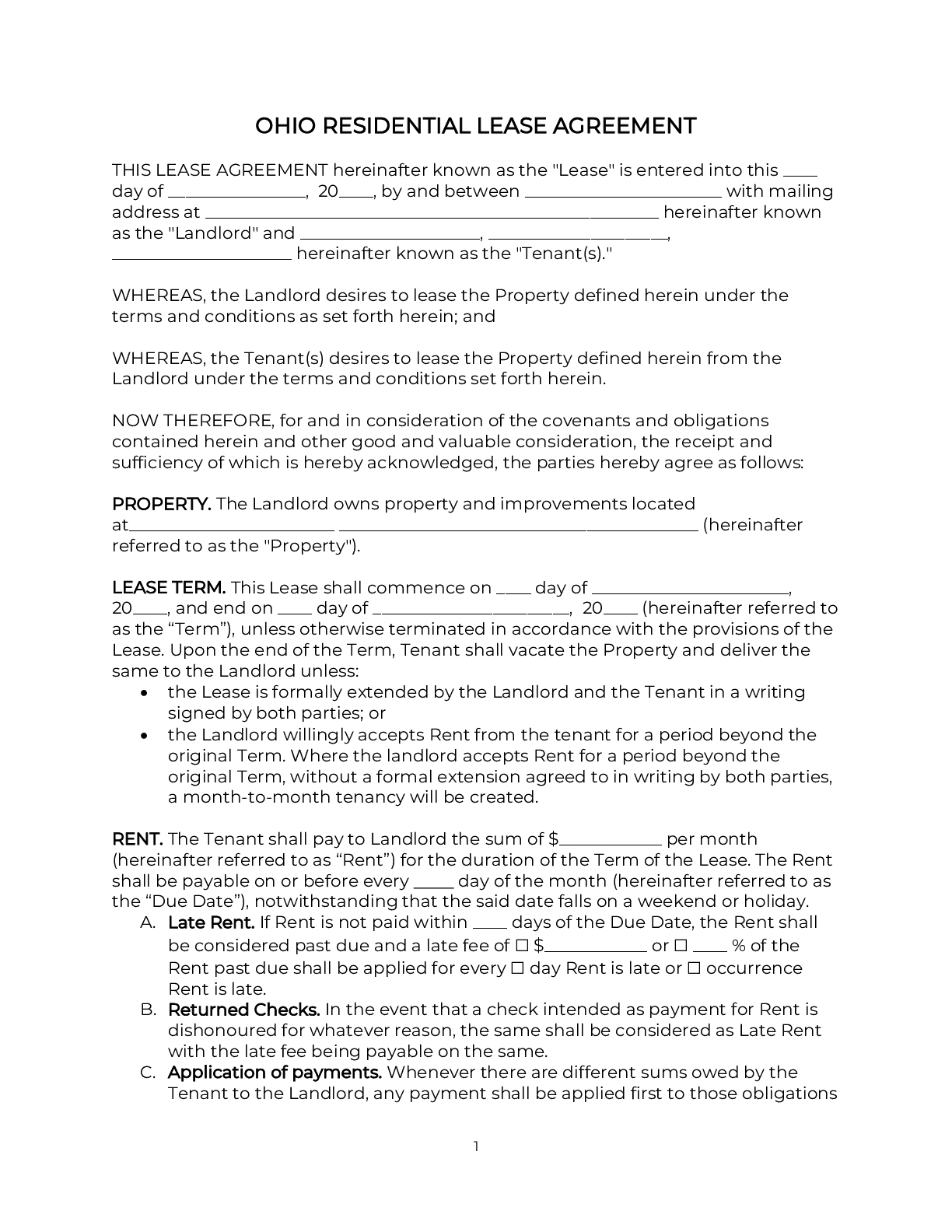
An Ohio residential lease agreement (“rental agreement”) is a legal contract for a tenant to rent a residential property from a landlord, subject to terms and conditions agreed by all parties.
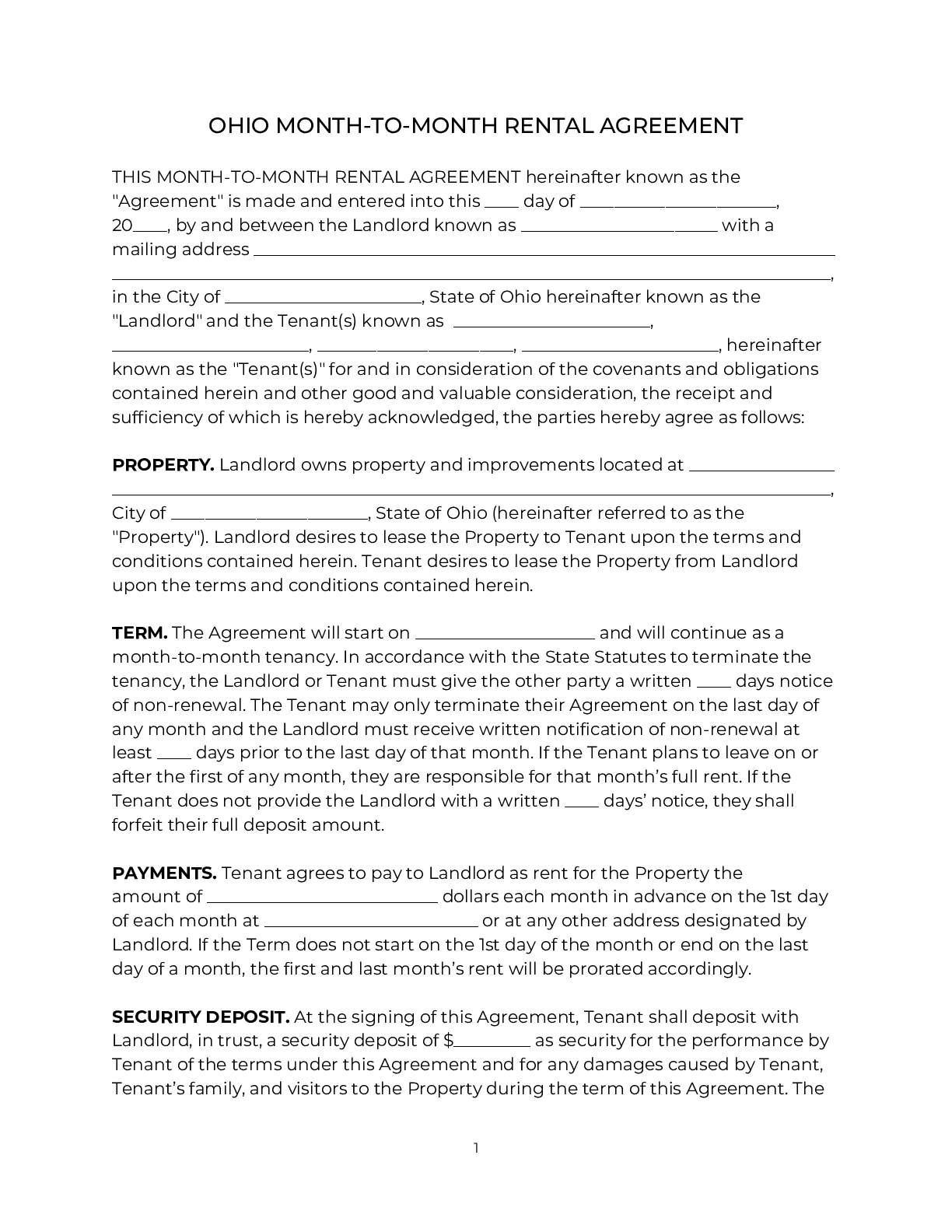
An Ohio month-to-month lease agreement is a contract (not necessarily written) where a tenant rents property from a landlord. The full rental term is one month, renewable on a month-to-month basis.
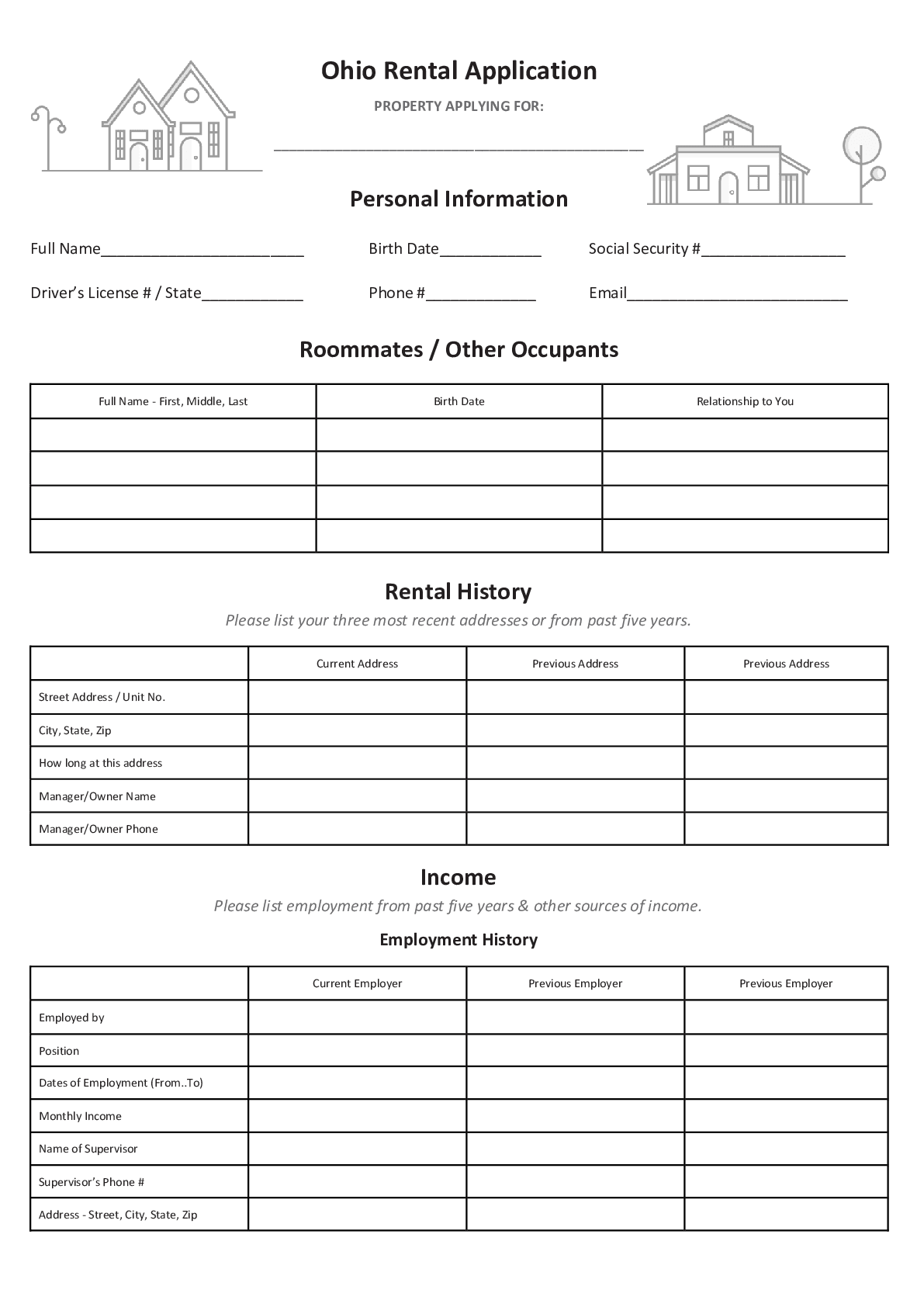
Ohio landlords may use a rental application form to screen prospective tenants. A rental application collects information relating to finances, rental history, and past evictions.
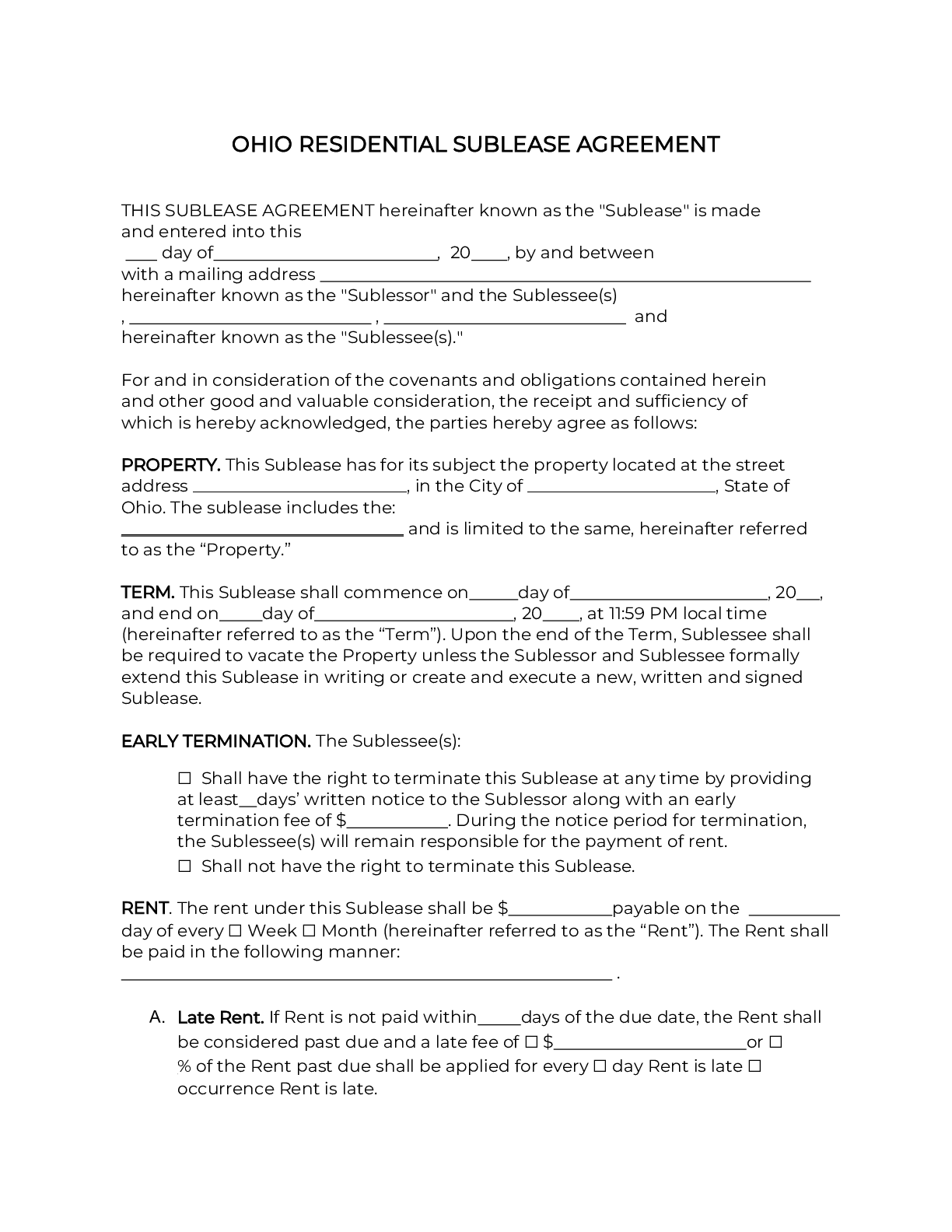
An Ohio sublease agreement is a legal contract where a tenant ("sublessor") rents (“subleases”) property to a new tenant (“sublessee”), usually with the landlord’s permission.
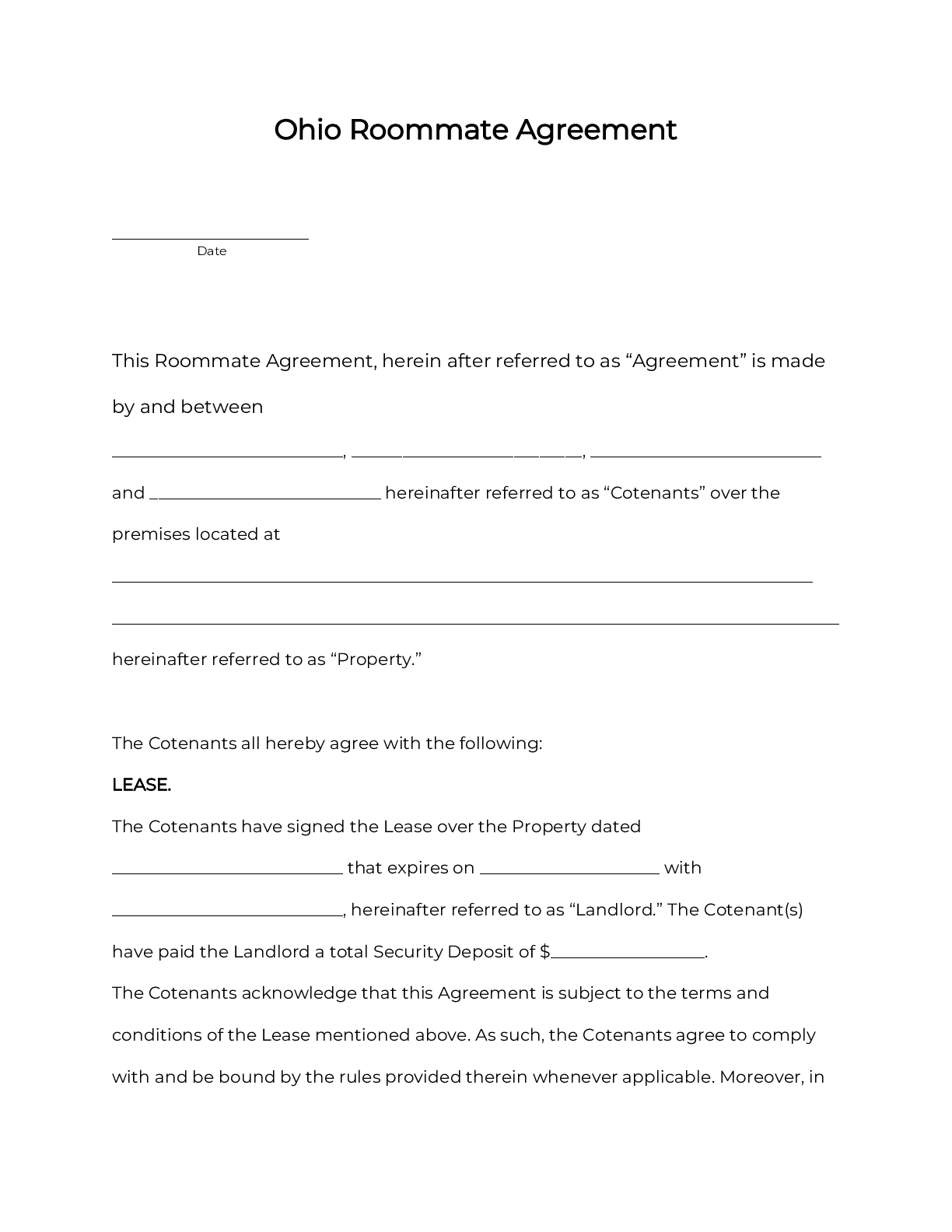
An Ohio roommate agreement is a legal contract between two or more people (“co-tenants”) who share a rental property according to rules they set, including for things like splitting the rent. This agreement binds the co-tenants living together, and doesn’t include the landlord.
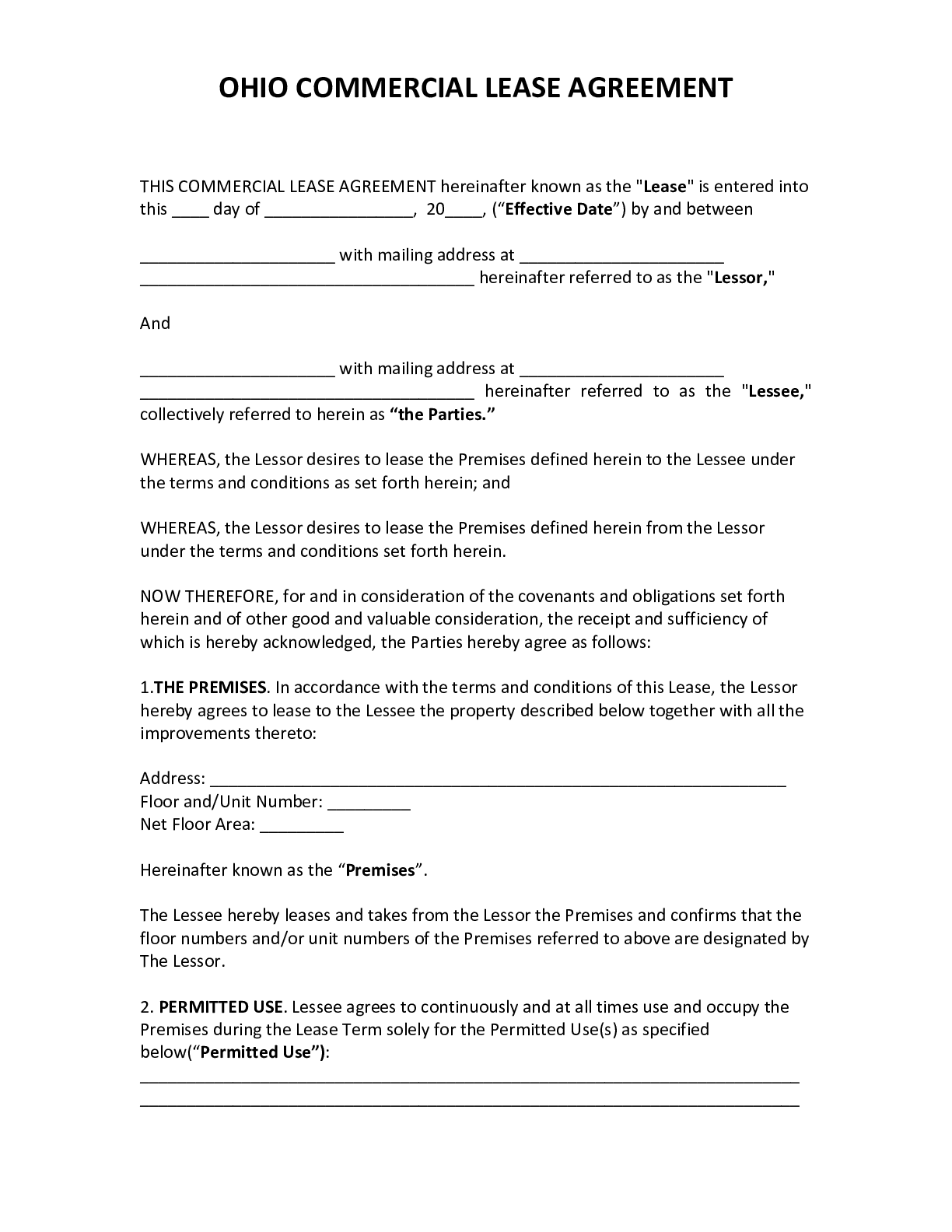
An Ohio commercial lease agreement is a legal contract arranging the rental of commercial space between a landlord and a business.
Ohio Required Lease Disclosures
- Landlord’s Name and Address(required for all leases) – Ohio leases must contain the name and address of the landlord or authorized agent. This enables smooth communication of any important legal notice.
- Lead-Based Paint Disclosure(required for some leases) – For any property built before 1978, federal law requires that a Ohio residential lease must contain a lead-based paint disclosure with an EPA informational pamphlet, plus notice of any lead hazards on the property.
To learn more about required disclosures in Ohio, click here.
Some Ohio cities, like Columbus , have more comprehensive rules than the statewide standard. Always check local laws.
Ohio Landlord Tenant Laws
- Warranty of Habitability – Ohio landlords can only rent out habitable property, which means providing certain features essential to basic health and safety. This includes (except in certain specific small-scale rental situations) things like heat, plumbing, electricity, and sound structural elements. Landlords must repair any issues within a reasonable time (up to 30 days) after proper notice from the tenant. Failure to repair lets a tenant sue the landlord, withhold rent, or terminate the lease. Tenants in Ohio aren’t allowed to repair and deduct.
- Evictions – Ohio landlords may evict for rent default, lease violations, or illegal acts, among other things. Before filing eviction, landlords must serve tenants with prior notice to quit, which can vary depending on the eviction type. This means evictions in Ohio can take between a few days to a few months. Ohio properties covered by the federal Coronavirus Aid, Relief, and Economic Security (CARES) Act are federally entitled to a minimum 30 days of advance notice before a landlord can file eviction, which can extend the eviction process. [1]
- Security Deposits – Ohio does not set a cap on the maximum a landlord can collect for a security deposit. Upon lease termination, a landlord must return any unused portion of a tenant’s security deposit within 30 days of lease termination and the landlord retaking possession of the property.
- Lease Termination – Ohio lets tenants terminate a month-to-month lease with 30 days of advance notice. A fixed-term lease usually can’t be terminated early without active military duty, landlord harassment, uninhabitable property, or domestic abuse.
- Rent Increases and Fees– Ohio landlords can raise rent by any amount, whenever they want, with no particular requirements for justification or advance notice. The state likewise does not regulate late fees or other miscellaneous fees, except for returned check fees which are capped at 10% of the original check’s value or $30 (whichever is greater).
- Landlord Entry – Ohio landlords may enter rental property for purposes reasonably related to the tenancy, like maintenance, inspections, property showings, and the delivery of bulky shipments. Before entering, a landlord must provide at least 24 hours of advance notice, unless there’s an emergency situation.
- Settling Legal Disputes – Ohio allows its small claims courts to hear landlord-tenant disputes, as long as the amount in controversy is under $3,000. The state does not allow evictions in small claims. The statute of limitations for most landlord-tenant issues in Ohio is eight years.
To learn more about landlord tenant laws in Ohio, click here.
Sources
We conclude that 15 U.S.C. 9058(c)(1) requires that a lessor of covered dwelling must provide a tenant with a notice to vacate 30 days before filing a forcible entry and detainer action.








